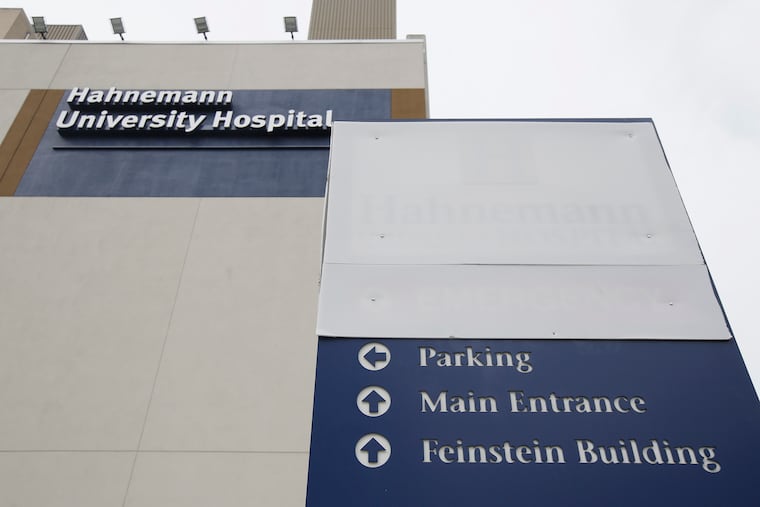Joel Freedman’s plan to borrow against Hahnemann property leads to latest bankruptcy skirmish
Unsecured creditors are opposing Joel Freedman's plan to add to the financial claims on Hahnemann real estate unless the money is used strictly for upkeep of the empty buildings.

Joel Freedman, the California businessman who bankrupted and closed Hahnemann University Hospital in 2019, has sparked more turmoil in the bankruptcy case that is grinding away in Wilmington.
Freedman says he is running out of money to keep the heat on, pay for security, and otherwise maintain the former Hahnemann buildings at Broad and Vine Streets in Philadelphia and wants to borrow $17.5 million — using the buildings as collateral — to cover costs while he tries to find a buyer.
Lawyers for the bankrupt Hahnemann entities and for unsecured creditors are crying foul.
When Freedman bought Hahnemann and St. Christopher’s Hospital for Children in 2018, he split the real estate from the hospital’s operations. That means the real estate is not in bankruptcy and proceeds from its sale can’t be used to pay Hahnemann’s debts.
Even so, prospective lenders asked Friedman to get a blessing for the 15-month loan in bankruptcy court.
That’s because the bankrupt shells he left behind — still millions in debt to vendors and other creditors — are making a long-shot effort to force Freedman’s Hahnemann real estate into the bankruptcy so proceeds from an eventual sale can be used to pay claims that could reach $300 million, according to one estimate.
» READ MORE: Hahnemann proving to be a difficult real estate play (from August 2019)
Lawyers for the Hahnemann shells and creditors want to block the loan, or at least ensure that the money doesn’t go into the pockets of Freedman or his advisers and is instead used only to take care of the buildings.
In a sign of how contentious the Hahnemann bankruptcy has become, an online hearing Friday before U.S. Bankruptcy Judge Mary F. Walrath wasn’t even about whether the loan should be allowed, but instead about how much information lawyers trying to block it should get about how the money will be used.
Lawyers for the bankrupt Hahnemann entities said at the hearing that $6.5 million of the $17.5 million was for the cost of the loan itself. Other chunks are slated for unspecified expenses and for payments to a pension fund for members of District 1199C, which represented Hahnemann’s nurses aides, housekeeping and other staff. They want more information.
Mark Minuti, of Saul Ewing Arnstein & Lehr LLP, Hahnemann’s lead bankruptcy lawyer, said the goal is to block liens on the real estate that would lead to money being used for “illegitimate purposes,” namely for anything other than the maintenance of the property. “They should be able to show what they are using the money for,” Minuti told the judge.
Robert J. Malionek, a Latham & Watkins LLP lawyer representing Freedman, told Walrath that lawyers for the bankrupt shells were making excessive demands for documents because they want to “fish for evidence” to support claims in a sealed lawsuit alleging that Freedman’s real estate should be part of the bankruptcy.
In a filing Thursday, Malionek and other Latham & Watkins lawyers said lawyers for the Hahnemann shells oppose the loan because they want Freedman to run out of money and be forced “into a settlement on unreasonable terms.”
» READ MORE: It would have taken a miracle to save Hahnemann (from June 2020)
Freedman last caused an uproar in the Hahnemann bankruptcy over the summer when he said he wanted to fire Hahnemann’s chief restructuring officer and two outside managers who have been overseeing the shell of a business for the last two years. He also said he wanted to replace Saul Ewing with a bankruptcy trustee who would wind down the case. Neither of those things happened.
On Friday, Walrath granted Minuti’s request for details on how the money from the $17.5 million loan would be spent, including documentation of the pension payments, but rejected several other information requests as irrelevant or out of bounds.
A hearing on the loan itself is scheduled for Dec. 1.